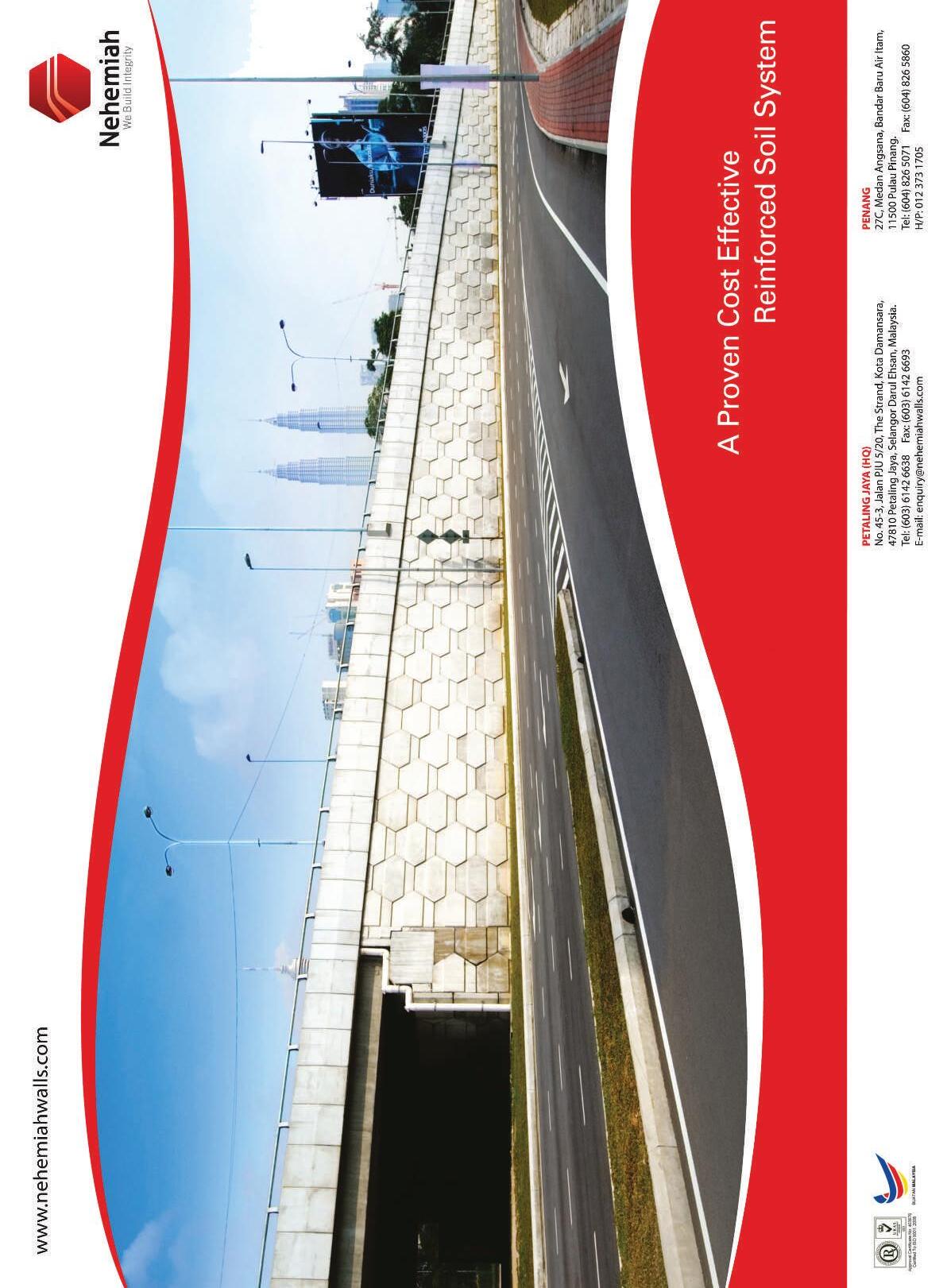
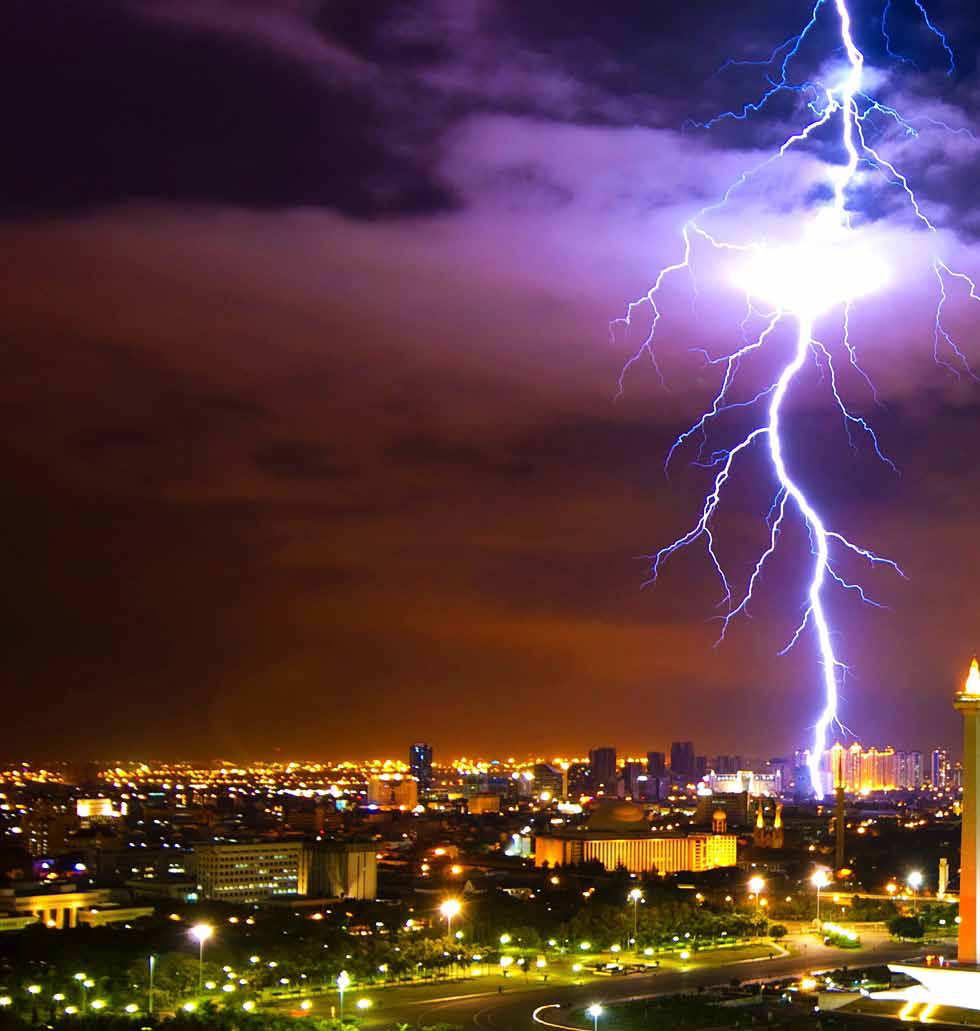
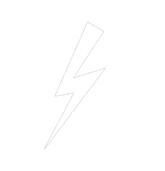
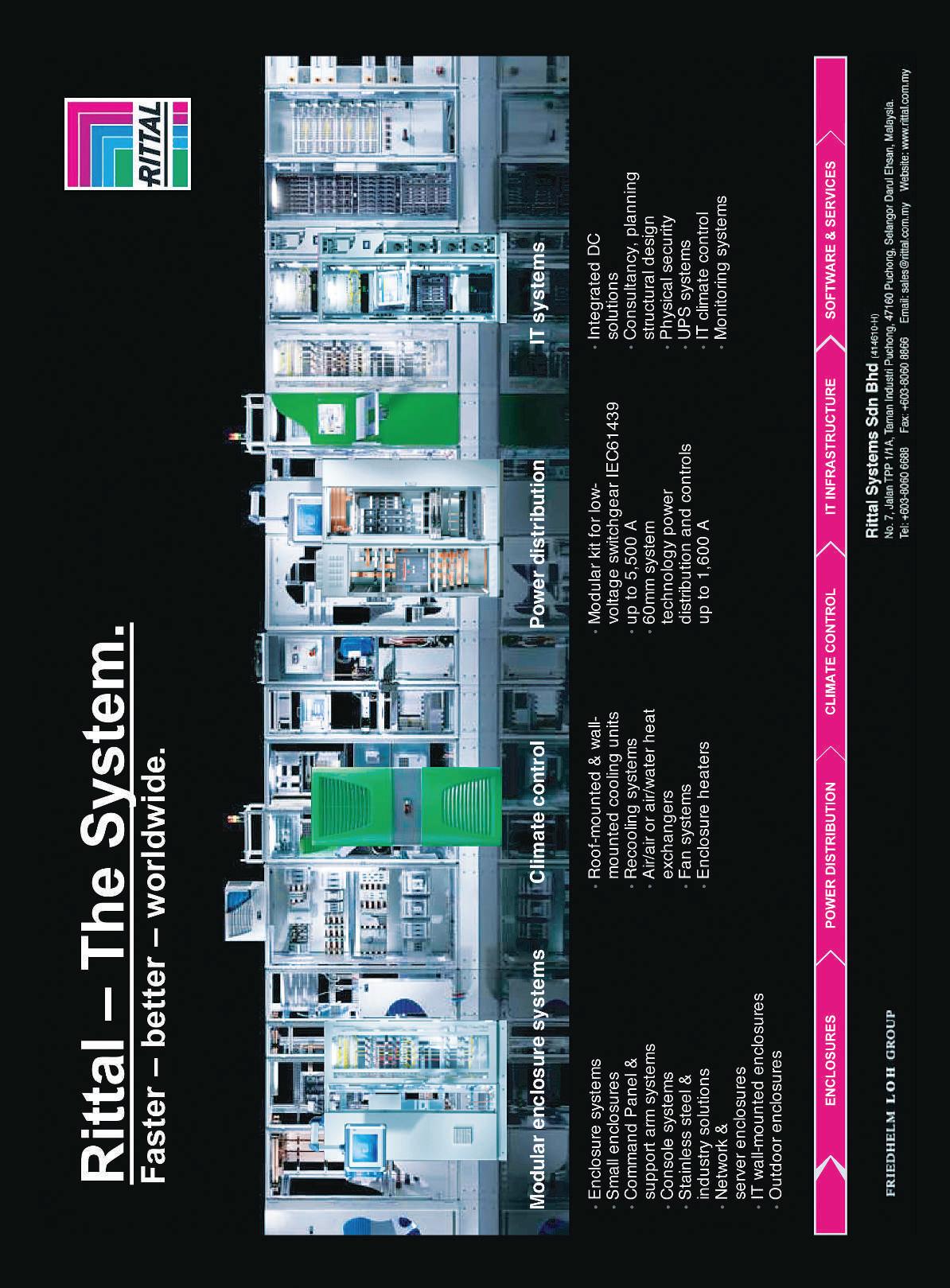
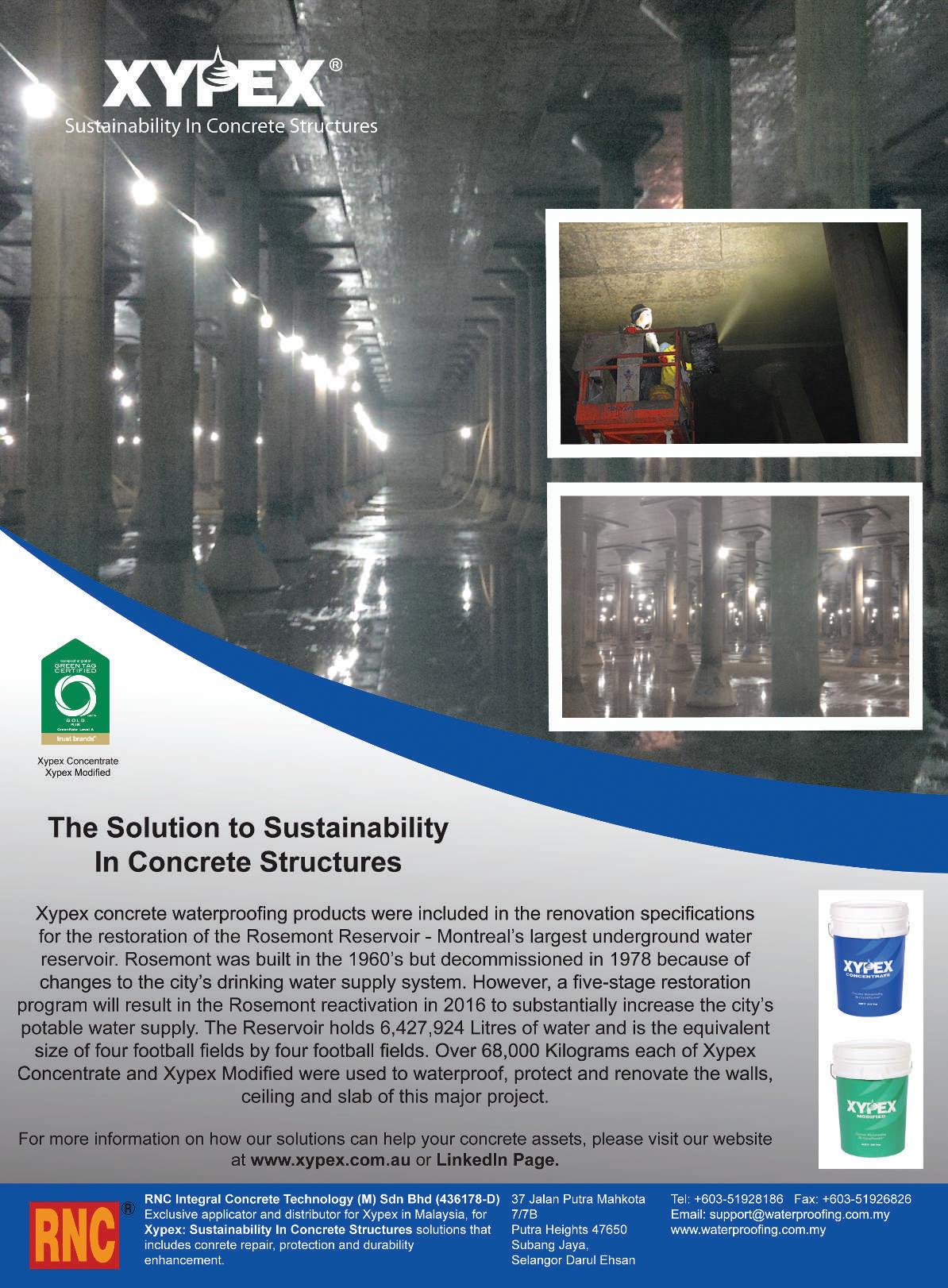
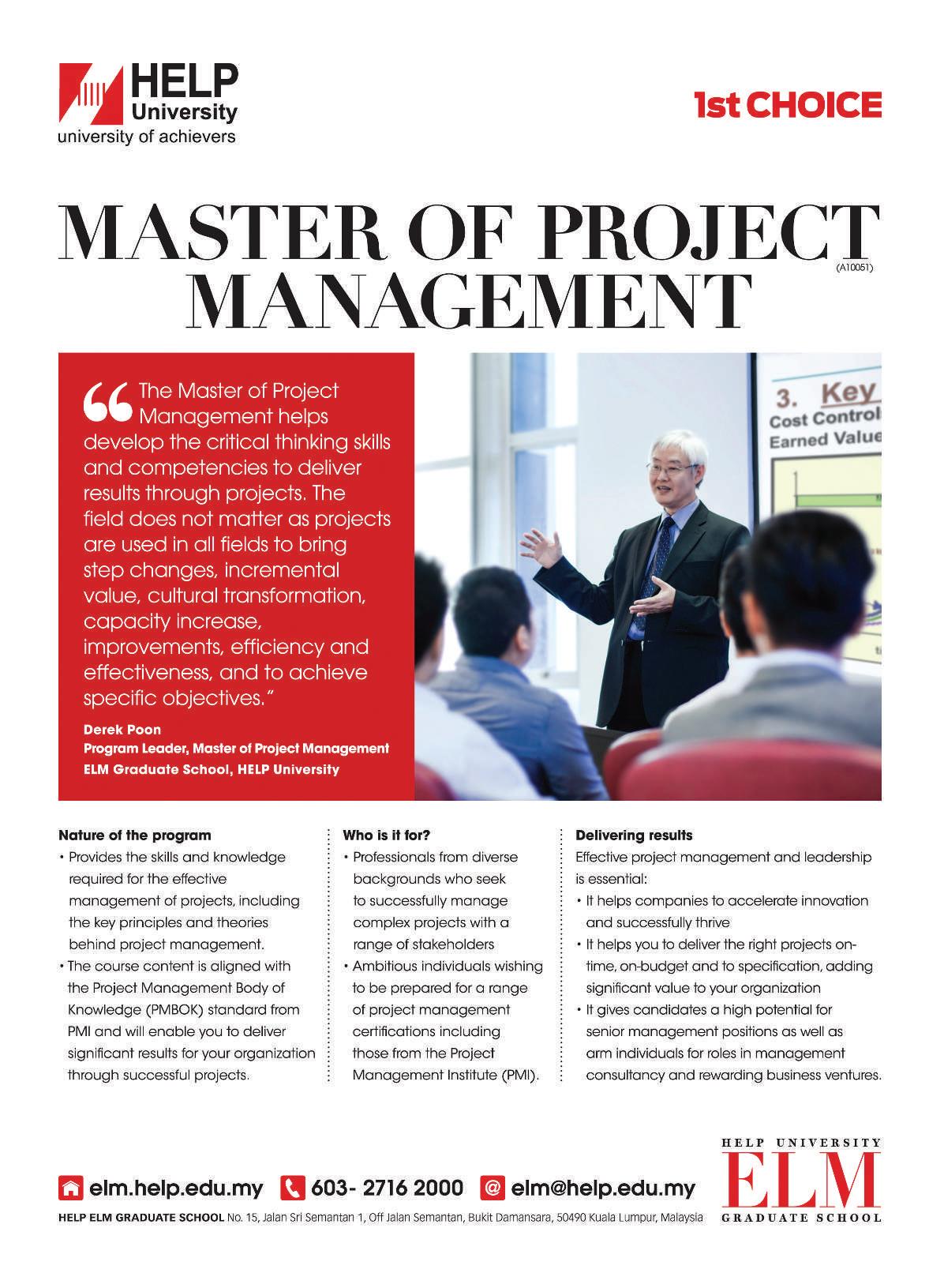


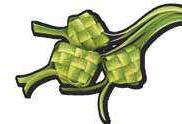
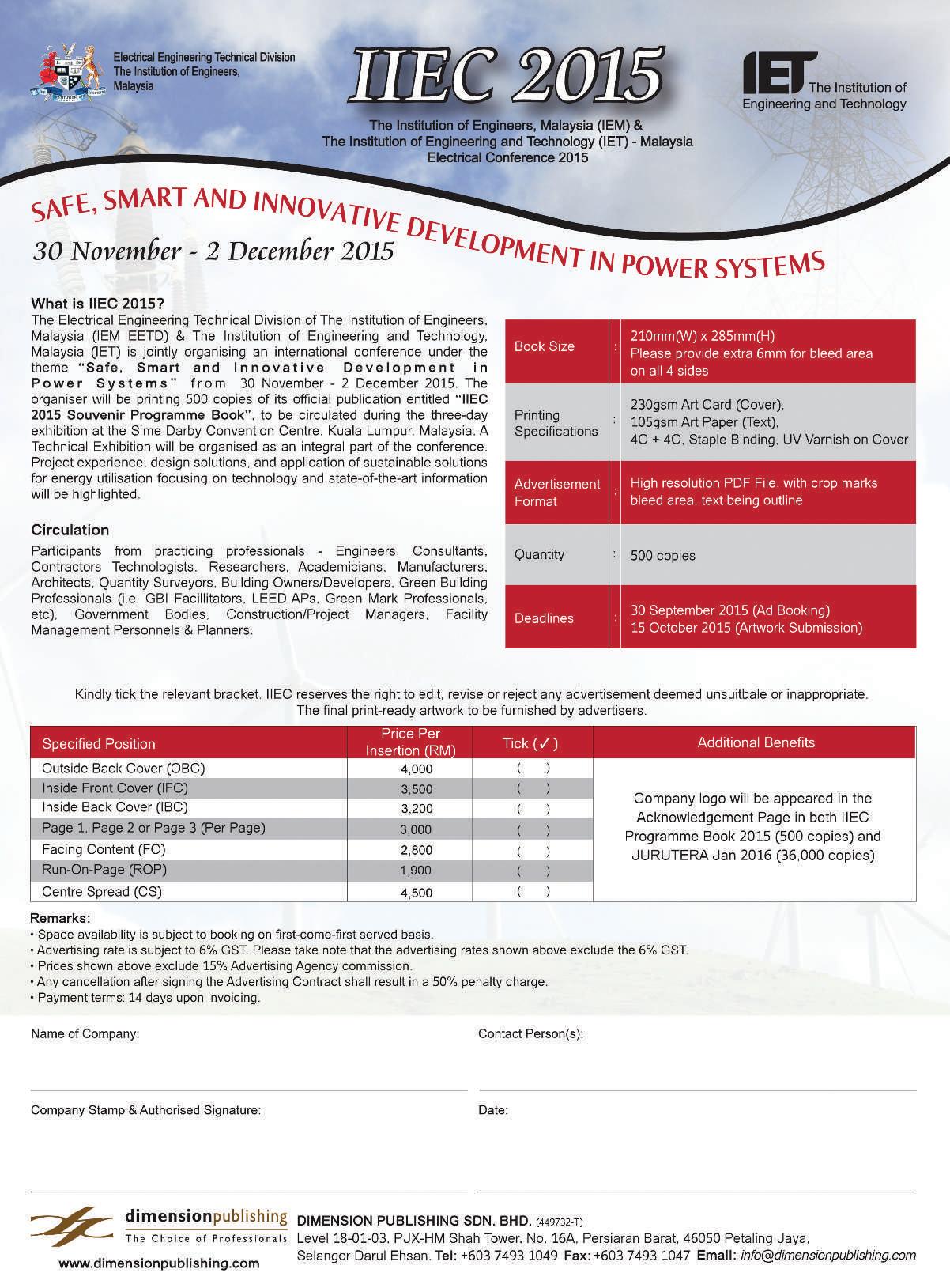
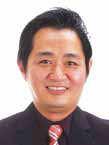
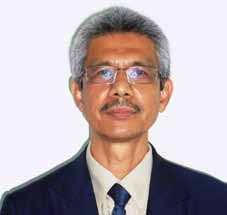

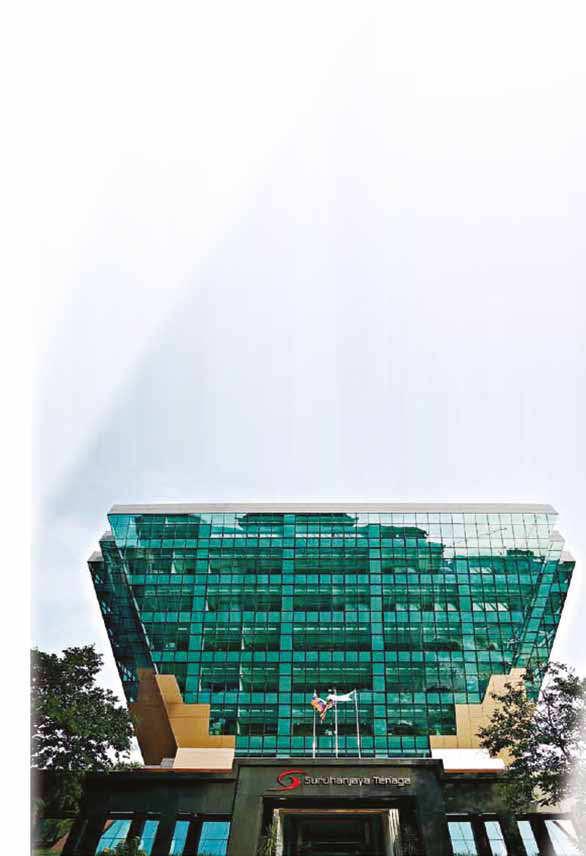
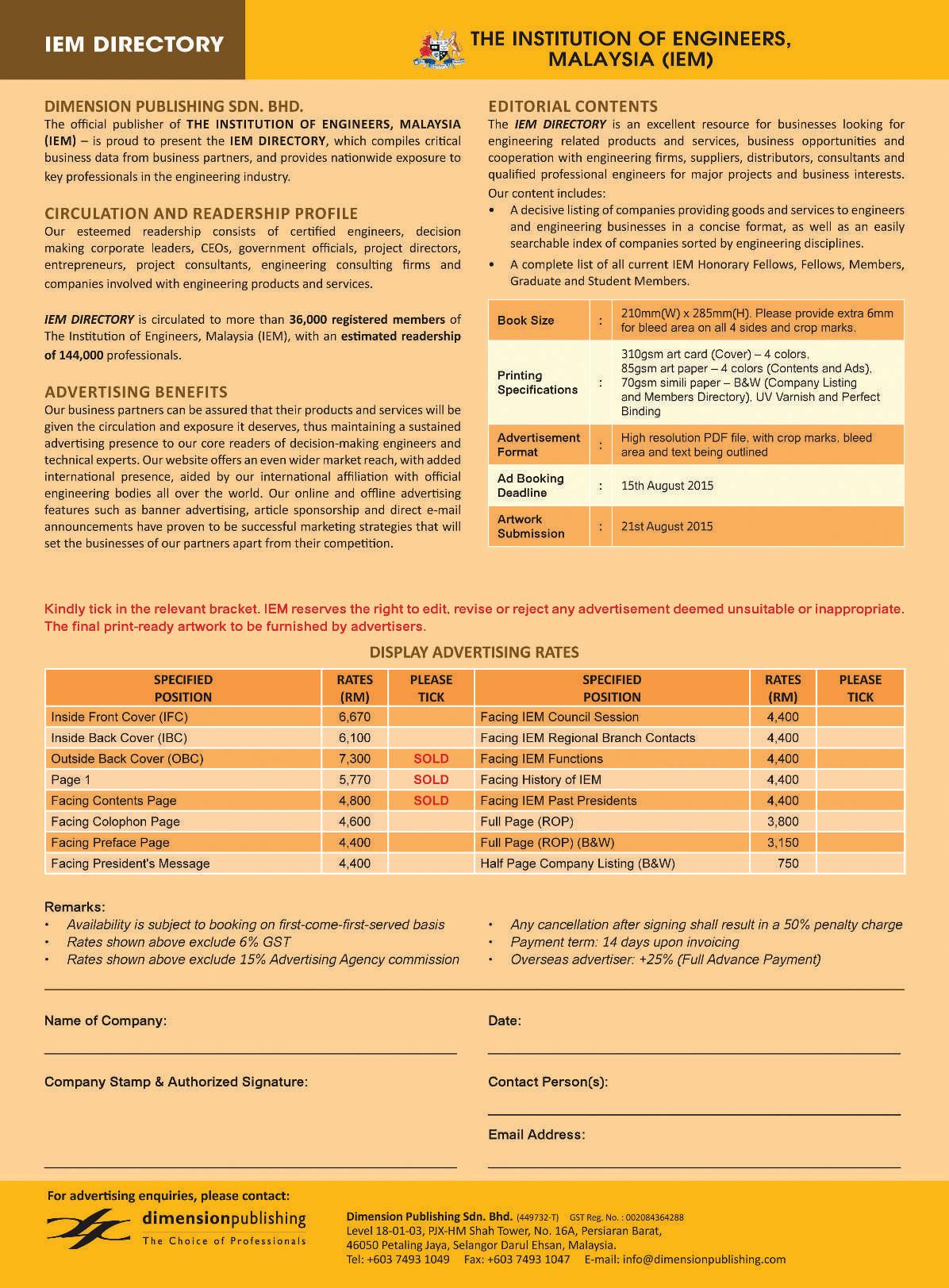
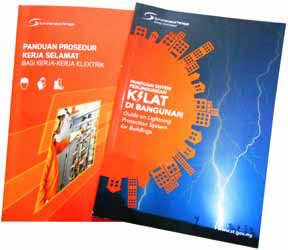
Guidelines published by the Energy Commission: Guide on Lightning Protection System for Buildings (right) and Guide for Safe Work Procedures for Electrical Work.

















Guidelines published by the Energy Commission: Guide on Lightning Protection System for Buildings (right) and Guide for Safe Work Procedures for Electrical Work.

by Mr. Hartono Zainal Abidin
Mr. Hartono graduated with a B.Eng (Hons) Electrical and Electronics from the Loughborough University of Technology in 1979. He took the lead role in forensic analysis of lightning damages to electronic and IT systems and has been conducting forensic analyses and providing lightning protection design services for various clients including at the Dallas-Fort Worth International Airport, USA. His interest is in analyzing buildings damaged by lightning. He co-developed a new lightning air terminal placement method which is included in the lightning protection standards of Australia (AS1768:2003) and the IEC (IEC62305:2006). He became the irst Malaysian invited to give a lecture at the Asian Lightning Protection Forum and the International Nathiagali Summer College. He was also a member of CIGRE Working Group C4.410 “Lightning Protection of Very Tall Structures”. He has written and co-authored over 50 reports and conference papers on building lightning protection.
When Benjamin Franklin invented the lightning air terminal (i.e. lightning rod) in 1752, he gave man a means to protect his home and workplace from the devastating effects of lightning. When it was discovered that the air terminal neither prevented nor attracted lightning strokes, early scientists devised novel methods for placing the air terminals on the roof to protect the structures.
With the construction of higher structures in lightning prone areas in the last 50 years, there has been significant progress in the quest to improve the protection of these structures against lightning. The air terminal placement on a structure is now recognised as the most important criteria in the design and construction of an effective conventional lightning protection (LP) system.
A correctly positioned air termination system can result in almost zero bypasses (i.e. Lightning damages to buildings) since it can intercept all or most lightning strokes while an incorrectly positioned system can render part of or the entire LP system ineffective. In the non-conventional LP system, the air terminal placement was based on erroneous assumptions of lightning behaviour, resulting in multiple bypasses to many tall buildings in the last 25 years.
Several air terminal placement methods have been developed since the 19th Century and these can be found in present day LP standards (Figure 1). These have enabled engineers to design air termination systems that are effective in intercepting lightning strokes. They are described in the recognised LP standards eg. AS1768, IEC62305, NFPA780.
The Protection Angle Method (PAM) was developed by French scientist Gay Lussac (19th Century). In this method, the elevated air terminal provides a limited shielded zone near its base and it can be applied either singly or in pairs of 2 or more depending on the shielding area required. It can be applied on any flat surface, whether on the ground or on the roof top. A special version of the method applied in conjunction with overhead shield wires (OSW) can provide a wider protection zone.
British scientist James Clerk Maxwell (19th Century) developed The Mesh Method (MM) to address the problem of lightning strikes to flat horizontal and vertical surfaces. In this method, the conductor was placed in grid form on the exposed horizontal and vertical surfaces of the building. It was very unpopular with architects and building owners due to its negative aesthetics and cost issues.
The Rolling Sphere Method (RSM), developed by Hungarian scientist Professor Tibor Horvath in the mid-20th Century, was first applied in the Hungarian LP standard in the 1960s. The RSM later appeared in the western LP standards (e.g. BS6651, NFPA780) a decade later. The method was based on studies of lightninginterception(i.e.strikes)tohighvoltage power transmission lines and was later applied to tall buildings. In this method, an imaginary sphere is rolled over and around the structure in order to determine the lightning shielded zones (shaded areas). Although the method is applicable to both simple and complex structures, it is not capable of identifying the more vulnerable parts of the structure which are at higher risk of lightning interception.

Figure 1: The PAM (left), MM (centre) and RSM (right) (Source: IEC62305)
The Collection Surface Method (CSM) was developed by Malaysian engineers Hartono Zainal Abidin and Robiah Ibrahim in 1995 [1] [2]. In this method, the effective air terminal placement was derived from the observed bypass locations on more than 100 buildings in Malaysia and Singapore. The algorithm for determining the collection surface was similar
to that used in the RSM but inversed, hence the size of the collection surface at a particular position on the structure determines its vulnerability i.e. the bigger the collection surface, the higher the risk (Figure 2).

The validity of the method was based on the bypass data that corresponded closely with the CSM model. The identified high risk locations on the structures are as shown in Figure 3:
E
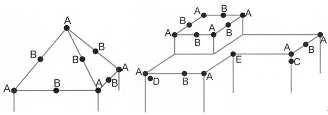
The introduction of the CSM in modern LP standards suffered an early setback when it was rejected by the SIRIM working group on lightning protection in 1998. However, it was accepted by the Standards Australia and the IEC TC81 working groups when their respective standards were undergoing revision in 1999 and 2000 respectively.
The basic principle of the CSM (i.e. the placement of air terminals at the high risk positions) has since been included in the Australian Standard AS1768:2003 and the International Standard IEC62305:2006. In 2007, the IEC62305 was adopted as the new Malaysian LP standard, MS-IEC62305 as well as the new British Standard, BS-EN62305.
In the IEC standard, the principle of the CSM is stated as follows: “Air termination components installed on a structure shall be located at corners, exposed points and edges (especially on the upper level of any facades) in accordance with one of the following methods (i.e. PAM, MM or RSM)”.
After the CSM was accepted in the IEC standard, some western LP experts conducted further research to improve it. In 2008, Josef and Marek Dudas [3] developed a software
Course Presenter: Ir. Associate Professor Dr. Lau Hieng Ho BEng (Hons) (Civil Eng), PhD (C&S Eng),

Accumulated over 17 years of teaching experience in
Deputy Dean of School of Engineering & Science in Curtin University Sarawak Malaysia, Acting Dean of School of Engineering & Science (2013), Associate Professor (2010-Present) and Head of Department of Civil & Construction Engineering (2005-2011) Engineering research expertise includes the aspects of cold-formed steel, structural stability, connections, corrosion and construction waste management & sustainable development
Founding members and the Honorary Secretary of the Malaysia Cold-formed Steel Institute (MyCSI)
The short course will discuss the behavior of cold-formed steel members and connections. The short course is structured to provide knowledge and understanding to behavior and design of cold-formed steel. For engineers experienced with cold-formed steel design, the short course will strengthen their understanding of thefundamental behavior of both members and connections, as well as provide a better understanding of
Session 2: Tension members
Session 3: Flexural Members (Part 1)
Session 4: Flexural Members (Part 2)
Session 5: Compression Members (Part 1)
Session 6: Compression Members (Part 2) Bracing Requirements
Session 7: Connections
Session 8: Direct Strength Method
Question and Answer
General Discussion
EARLY BIRD DISCOUNT RM100 Pay Before: 8 August 2015
ARMADA HOTEL, PJ 8-9 September 2015 RM2000 (Individual) RM1800 (Group)
Closing Date: 1 September 2015
Please Contact Applied Technology Group Sdn. Bhd.: Phone: 03-5634 7905 / 017-328 1097
Email: admin@apptechgroups.net Fax: 03-5637 9945
12 BEM approved CPD Hours (Ref No.: ISE/MD/CPD/ATG/011) 20 CIDB approved CCD Points (Ref No.: CIDBSL/C/2015/0108)
Course Title: Centrifugal Pumps
Speaker: Dr. Ling Foon Fatt
Venue: Armada Hotel, Petaling Jaya
Date: 12 October 2015
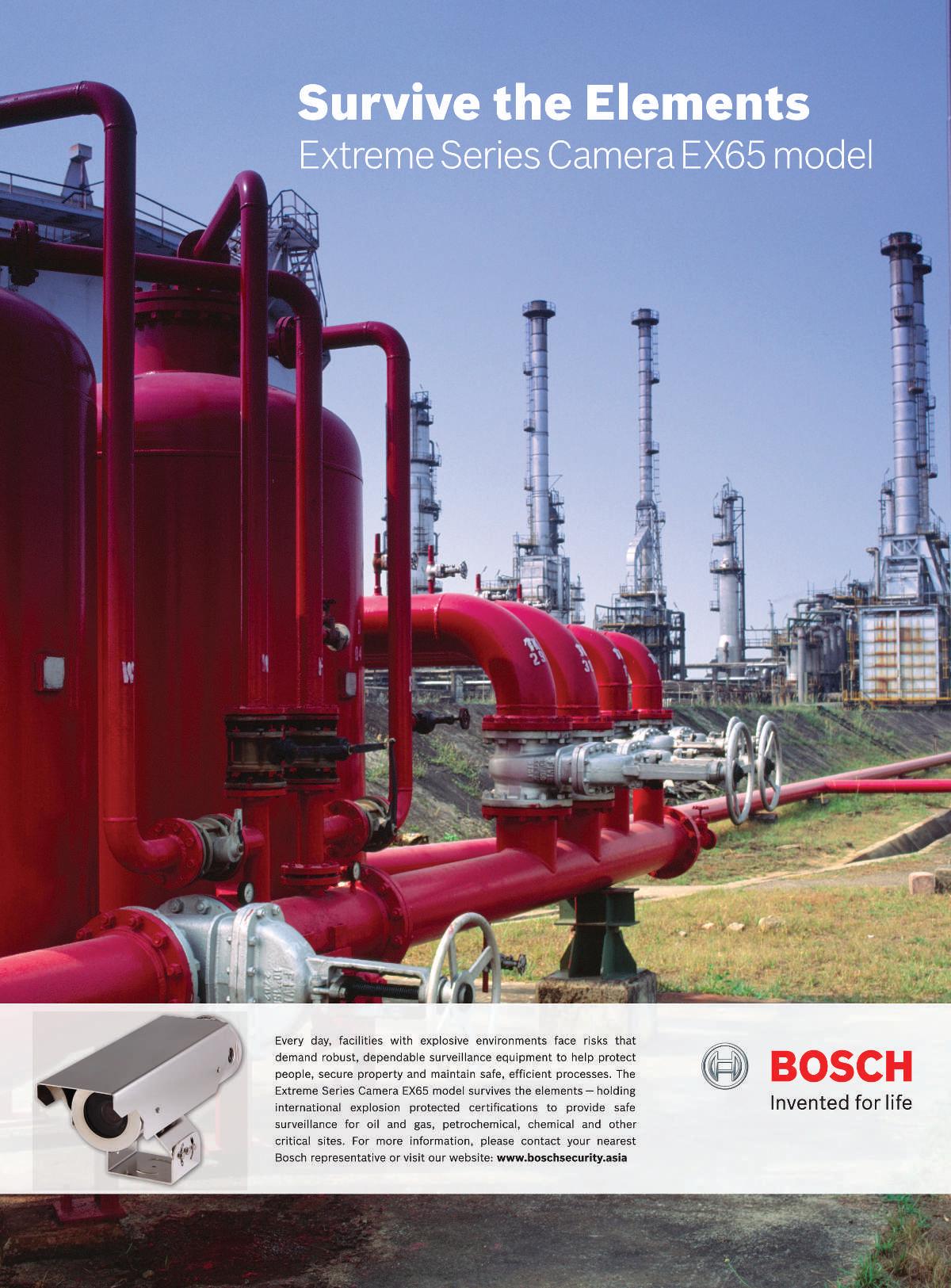
application that could determine the high risk locations on a structure in 3-D. Alexander Kern [4] developed more advanced software that could numerically determine the lightning interception levels on the various high risk locations. The software suggested that air terminals positioned at building corners could intercept nearly 99% of the lightning strokes (Figure 4).
The Kern software also suggested that a single tall air terminal placed in the centre of a flat roof could only intercept about 60% of the lightning strokes. This explained the high number of bypasses observed on tall structures installed with the non-conventional LP systems in the country.
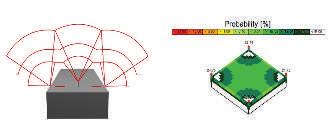
AstudyofconventionalLPsystemsinMalaysiasuggestedthat more than 90% of air terminal placements did not comply with past or current standards [5]. This resulted in a significant number of bypasses on buildings that had been installed with the conventional air terminal. Misconceptions about lightning and conventional air terminal which seems to be prevalent among Malaysians engineers have contributed to the widespread errors in air termination system design.
The first misconception is that lightning is attracted to metallic objects and electromagnetic radiation (e.g. from mobile phones). The second misconception is that a conventional air terminal can attract lightning. These misconceptions must be eradicated from the minds of engineers if they are to design effective LP systems.
The above misconceptions were initially propagated by non-conventional LP system vendors in order to mislead and confuse engineers and the public about lightning protection. Unfortunately, some university lecturers were also found to be teaching these misconceptions to their students and to engineers while some even added new ones. Two local universities that had applied these misconceptions were Universiti Teknologi Malaysia (UTM) and Universiti Putra Malaysia (UPM).
In the book “Kilat dan Perlindungan”[6], several new misconceptions were introduced by the author such as: 1. “Perlindunganyangdiberiolehpengalirrodberdasarkan prinsip iaitu setiap ‘ketua’ tertapak yang memasuki zon perlindungan konakan tertarik kepada pengalir rod tersebut” (Translation: The protection provided by the rod
conductor is based on the principle that every stepped leader that enters the conical protection zone will be attracted to the said rod conductor).
2. “Zamandahulumanusiamembinatempatperlindungan daripada kayu adalah untuk melindungi rumah dari terbakar dan rosak disebabkan oleh panahan kilat. Kini manusia telah mendirikan rumah dan bangunan dengan sokongan bahan besi, mengakibatkan ia mudah dipanah kilat dan menyebabkan lebih banyak kerosakan” (Translation: In the past, mankind built shelters out of wood so that their homes would not be burnt and damaged by lightning strikes. Nowadays, mankind have built their homes and buildings with the support of steel components, thus making them easy to be struck by lightning and causing more damages).
3. “Kedudukan pengkalan udara mestilah 24 inci dari bucu penjuru rumah”(Translation: The placement of an air terminal must be 24 inches from the ridge end of the house).
In 2011, UPM applied the same misconceptions that were popularised by the non-conventional LP vendors two decades earlier. In its website, the Centre of Excellence on Lightning Protection (CELP) described the LP system as follows: “When a downward (lightning) channel comes from a cloud, the air termination sends an upward channel (i.e. streamer) much faster than the other parts of the building thus the lightning is attracted to one of the rods (or to the metallic mesh)….. Thus, instead of repelling, a LP system attracts a lightning channel.”
The impact of the above misconceptions could be seen in most public and private buildings nationwide, where the air terminals were not positioned at the high risk locations as according to the LP standard i.e. ridge ends and corners (Figures 5 & 6).



Public awareness of the non-conventional air terminals had been raised several times locally since 1993 through the mass media, at a public forum [7] and in a technical journal [8]. However, lack of action by the authorities to stop their sale and use resulted in the widespread use of these nonscientific and dangerous devices in the country.
Non-conventional air terminals are categorised as either lightning attractor devices e.g. Early Streamer Emission (ESE) and Collection Volume (CV) air terminals (Figure 7), lightning eliminator/rejection devices e.g. Charge Transfer System (CTS), Dissipation Array System (DAS) and Compound AirPlasma Lightning Rejection system (CPLR) or lightning current reduction devices e.g. Semiconductor Lightning Extender (SLE) (Figure 8).
In 2007, a UTM lecturer and his colleagues invented a non-conventional air terminal known as the HAS system (Figure 9). However, in order to justify the project budget, they claimed that it was a conventional air terminal but with “attractive powers”.



More than 95% of non-conventional air terminals used in the country consists of lightning attractor (i.e. ESE and CV) air terminalswhichwereusuallyplacedatthecentreoftheroof. One or more bypasses have been observed in most tall or large buildings that have been installed with one or more of these non-conventional air terminals (Figures 10 & 11). Many LP experts have published peer reviewed papers and books on the failures of the ESE and CV air terminals in Malaysia [9] [10] [11] [12]. These experts regarded the observed bypasses as indisputable evidence of the failure of such air terminals [13].
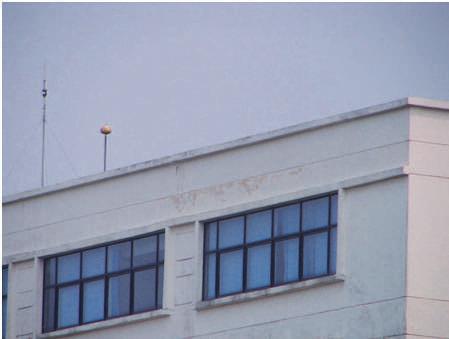

The application of the Malaysian-developed CSM in the AustralianandIECstandardsmarkedtheendoftwocenturies of western monopoly on building lightning protection which began with the invention of the lightning rod.
A conventional LP system that is designed and installed according to the IEC62305 standard, can achieve a high level of protection. An air termination system design that fully complies with the standard can intercept up to 99% of the lightning strokes. The application of the IEC standard in LP design can lead to the reduction or even elimination of bypasses on structures of all shapes and sizes. This increase in safety factor can mean a hefty reduction in losses due to lightning.
The use of the non-conventional air terminals must be discontinued immediately in order to minimise losses in monetary terms and human lives. Since the nonconventional LP systems proved to be non-scientific and dangerous to use, engineers must refrain from using them, in accordance with the respective institutional codes of conduct on public safety.




[1] ZAHartono and I Robiah, “Amethod of identifying the lightning strike location on a structure”, International Conference on EMC, Kuala Lumpur, 1995.
[2] ZA Hartono and I Robiah, “The collection surface concept as a reliable method for predicting the lightning strike location”, International Conference on Lightning Protection (ICLP), Rhodes, Greece, 2000.
[3] J Dudas and M Dudas, “Software for lightning protection system diagnosis according to IEC 62305”, ICLP, Uppsala, Sweden, 2008 (http://www.lpsdesigner.cz/data/ICLP2008Paper10-3.pdf)
[4] A Kern et al., “Probability of lightning strikes to air termination of structures using the electro-geometrical model theory and the statistics of lightning current parameters”, 2012 (http://www.elabjuelich.de/Kern/Veroefentlichungen/Paper%20750_Strike%20 probability.pdf)
[5] ZA Hartono and I Robiah, “Misconceptions about lightning and its relation to air terminal design errors”, Invited Paper, CIGRE C4 Colloquium on Lightning and Power Systems, Kuala Lumpur, 2010 (http://www.lightningsafety.com/nlsi_lhm/misconceptions-aboutlightning.pdf)
[6] “Kilat dan perlindungan”, Hussein Ahmad, Penerbitan UTM, 1998
[7] ZA Hartono and I Robiah, “Conventional and un-conventional lightning air terminals: An overview”, ACEM Forum on Lightning Protection, Petaling Jaya, 2004 (http://www.lightningsafetyalliance. org/documents/acem_air_terminals.pdf)
[8] ZA Hartono and I Robiah, “Conventional and un-conventional lightning air terminals: An update”, Journal of the Association of Consulting Engineers Malaysia, 1Q 2007 (http://www.lightningsafety. com/nlsi_lhm/ACEM_Journal_Q1_2007.pdf)
[9] DMakerras,MDarvenizaandACLiew,“Reviewofclaimedenhanced protection of buildings by early streamer emission air terminals”, IEE Proceedings – Science Measurement Technology, Vol. 44, No. 1, 1997.
[10] MA Uman and VA Rakov, “A critical review of non-conventional approaches to lightning protection”, Bulletin of the American Meteorological Society, 2002 (http://www.lightningsafety.com/nlsi_ lhm/Uman_Rakov.pdf )
[11] V Cooray et al., “Lightning interception: Non-conventional lightning protection systems”, Report of CIGRE Working Group C4.405, Elektra, October 2011 (http://www.iclp-centre.org/pdf/CoorayCIGRE-2011.pdf)
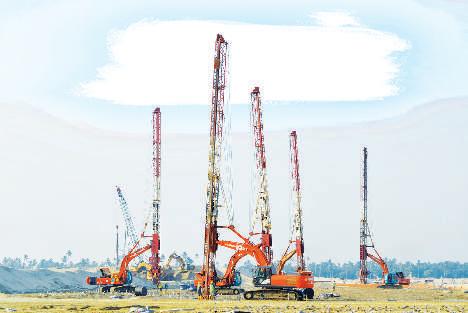
[12] “Lightning: Physics and Effects”, MA Uman and VA Rakov, Cambridge University Press, 2003
[13] “Lightning Protection”, edited by V Cooray, The Institution of Engineering and Technology, 2010


CONTRIBUTIONSTOWISMAIEMBUILDINGFUND

RM 2,672,916.70 from IEM Members and Committees
RM 741,502.00 from Private Organisations
TOTAL RM 3,414,418.70 (ANOTHER RM 3,879,767.40 IS NEEDED)
The Insituion would like to thank all contributors for donaing generously towards the IEM Building Fund HELP US TO PROVIDE BETTER SERVICES TO YOU AND TO THE FUTURE GENERATION (The donaion list to the Wisma IEM Building Fund is published on page 18 for the month of July 2015)














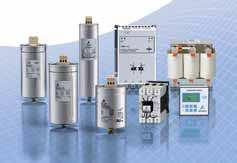












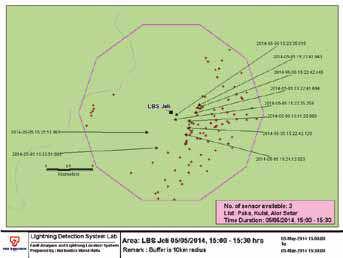


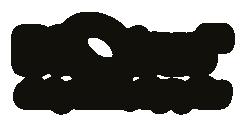
[1] Anderson, R.B.: Lightning research: where do we go from here?, Power Engineering Journal, 1992, pp. 179-190.
[2] Lightning Characteristics Relevant for Electrical Engineering: Assessment of Sensing, Recording and Mapping Requirements in the Light of Present Technological Advancements, CIGRE Technical Report (Task Force 33.01.02), 1995.
[3] Krider, E.P., R.C. Noggle, and M.A. Uman: A Gated Wideband Magnetic Direction Finder for Lightning Return Strokes, Journal of Applied Meteorology, Vol. 15, No. 3, 1976, pp. 301-306.
[4] Yahaya, M.P., H.B. Ahmad, and M.A. Alam: Lightning Detection System in Malaysia, Proc. National Technical Seminar on Standardization and Development of Lightning Protection Technologies- Malaysian Environment, Petaling Jaya, Malaysia, 6-7 November, 1996.
[5] Yahaya, M.P., S.A. Fuad: Characteristics of cloud-to-ground lightning in Malaysia, Proc. Conference on Lightning Protection and Earthing Systems, Kuala Lumpur, 15-16 August 2000.
[6] Peterson, W.A., and S.A. Rutledge: Some characteristics of cloud-to-ground lightning in tropical Northern Australia, Journal of Geophysical Research, Vol. 97, No. D11, 1992, pp. 11553-11560.
[7] Hidayat,S.,M.Ishii,J.Hojo,K.T.Sirait,andP.Pakpahan:Observation of lightning in Indonesia by magnetic direction-inder network, Proc. 10th International Conference on Atmospheric Electricity, Osaka, Japan, 10-14 June, 1996.
[8] Cooray, V., and K.P.S.C. Jayaratne: Characteristics of lightning lashes observed in Sri Lanka in the tropics, Journal of Geophysical Research, Vol. 99, No. D10, 1994, pp. 21,051-21,056.
[9] Abdullah, N.; Yahaya, M.P.; Hudi, N.S, “Implementation and Use of Lightning Detection Network in Malaysia”, Proc. 2nd IEEE International Conference on Power and Energy (PECon 08), December 1-3, 2008, Johor Baharu, Malaysia
[10] Abdullah, N.; Rahman, N.A; Arifin, M.F; “Improvement of 33kV Overhead Lines Lightning Performance using Multiple Approaches”, 8th 2013 Asia-Paciic International Conference on Lightning, Jun. 26-28, 2013, Seoul, Korea
Title: One-Day Workshop on Arduino 25 July 2015
Organisedby :InformationandCommunications TechnologySpecialInterestGroup
Time :9.00a.m.–5.00p.m.
CPD/PDP :7
PREREQUISITES:
Asthisisahandsonworkshop,participantsarerequired tobring:
1. YourownNotebooks(Win/OS/Linux)
2. StarterkitforArduinoUno(Loanunit/purchaseonsite (workshopday)
Kindly note that the scheduled events below are subject to change. Please visit the IEM website at www.myiem.org.my for more information on the upcoming events.



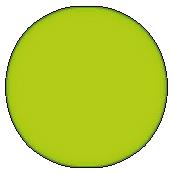

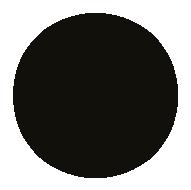
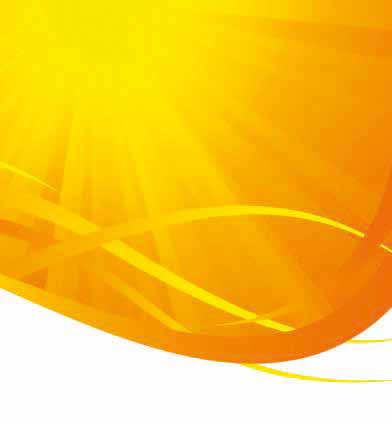





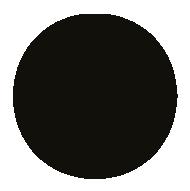











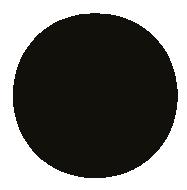

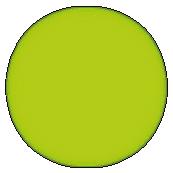
Detailed Design & Technical Support Will Be Provided








Lot 5139, Kawasan Perindustrian Pengkalan Chepa II, 16100 Kota Bharu, Kelantan. Tel : +609-771 7919 Fax : +609-771 7910 Email : info@inotrus.com CEO Hotline : +6013-955 6677




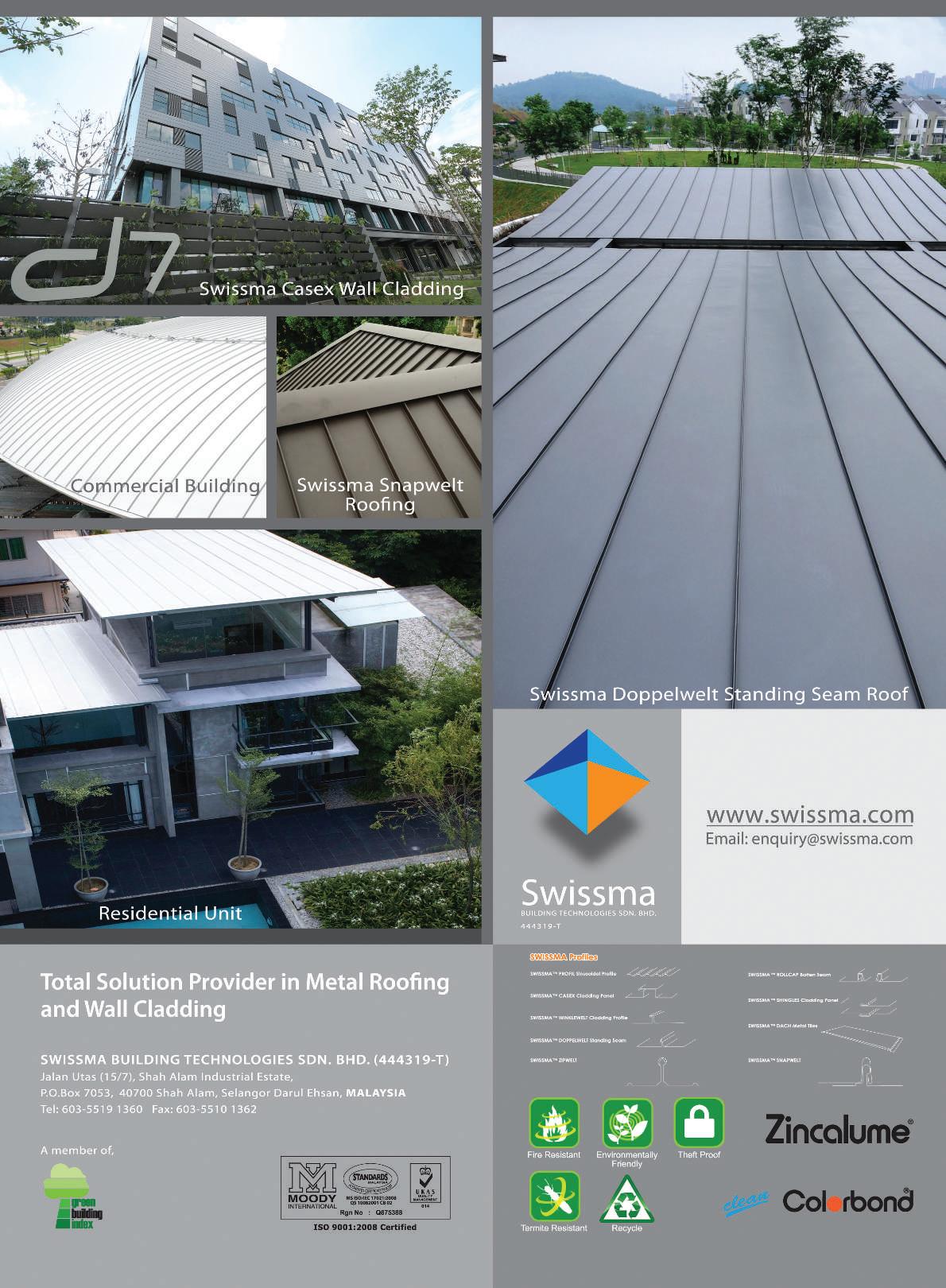


Table 2: Comparison of return-stroke peak currents (the largest peak, in kA) for irst strokes in negative downward lightning

The 95%, 50%, and 5% values are determined using the lognormal approximation to the actual data, with 50% values in the parentheses being based on the actual data.
σlgI is the standard deviation of the logarithm (base 10) of peak current in kA; β= 2.3026 σlgI
* As reported by Takami and Okabe (2007).
**26 kA and 0.32 after compensation for the 9-kA lower measurement limit.
Table 3: Comparison of return-stroke peak currents (in kA) for subsequent strokes in negative lightning

The 95%, 50%, and 5% values are determined using the lognormal approximation to the actual data. σlgI is the standard deviation of the logarithm (base 10) of peak current in kA; β = 2.3026 σlgI. Data for strokes in upward and rocket-triggered flashes are included because those strokes are similar to subsequent strokes in natural downward flashes.

[1] Murty, O. P., Chong, K. K., Husin, M. H. A., Kumar, R. K. N. and Yusuf, W. Y. W. M., “Fatal lightning strikes in Malaysia: A review of 27 fatalities,” Amer. J. Forensic Medicine & Pathology, vol. 30, no. 3, pp. 246–251, 2009.
[2] Chao, T. C.,Pakiam, J. E. and Chia, J., “Astudy of lightning deaths in Singapore,” Singapore Medical J., vol 22, no. 3, June 1981.
[3] Rakov, V. A. and Uman, M A., “Lightning: Physics and Effects. Cambridge Univ. Press,2007
[4] Hidayat, S., “Characteristic of lightning in Indonesia observed by lightning location system,” Ph.D. thesis, Dept. of Electrical Engineering, University of Tokyo, Japan, 1996.
[5] Hamid, E.Y., Kawasaki, Z., Mardiana, R. and Matsura, K., “TRMM/lis observations of lightning activity over Indonesia and comparison with ground-based measurement around Java Island,” J. Atmos. Electr., vol. 19, no. 2, pp. 153–164, 1999.
[6] G.K. Manohar and A.P. Kesarkar, “Climatology of thunderstorm activity over the Indian region: A study of east-west contrast,” Mausam, vol. 54, pp. 819–828, 2003.
[7] Manohar, G. K. and Kesarkar, A.P., “Climatology of thunderstorm activity over the Indian region: II. Spatial distribution,” Mausam, vol. 55, pp. 31–40, 2004.
[8] Gomes, C. and Kadir, Z., “A theoretical approach to estimate the annual lightning hazards on human beings”, Atmospheric Research, Vol. 101, Issue 3, pp. 719-725, 2011
[9] Asha, N., Manohar, G. K., Dani, K. K. and Devara, P. C. S. “Astudy of lightning activity over land and oceanic regions of India,” J. Earth System Science, vol. 118, no. 5, pp. 467–481, 2009.
[10] Mir, H., Hussain, A. and Babar, Z. A., “Analysis of thunderstorms activity over Pakistan during (1961-2000),” Pakistan J. Meteorology, vol. 3, no. 5, pp. 13–34, June 2006.
[11] Gomes, C., Ahmed, M., Abeysinghe, K. R. and Hussain, F., “Lightning accidents and awareness in South Asia: Experience in Sri Lanka and Bangladesh,” in Proc. 28th Int. Conf. Lightning Protection (ICLP), Kanazawa, Japan, Sept. 2006.
[12] Shwehdi, M. H., “Thunderstorm distribution and frequency in Saudi Arabia,” J. Geophysical Eng., vol. 2, pp. 252–267, 2005
[13] Berger, K; Anderson, R. B. and Kroninger, H., “Parameters of lightning lashes”, ELECTRA, No. 41, pp. 23-37, 1975.
[14] Anderson, R. B. and Eriksson, A. J., “Lightning Parameters for Engineering Application,” ELECTRA, no. 69, pp. 65-101, 1980
[15] IEEE Standard 1410-2010. 2010. IEEE Guide for Improving the Lightning Performance of Electric Power Overhead Distribution Lines
[16] CIGRÉ Task Force C4.01.02-B, Torres, H. (Chair), “Ground Flash Density: deinition of the appropriate grid size and a proposal of relationship Ng vs. Td for Tropical zones,” Activity Report, CIGRE WG C4.01 Meeting, Dallas, Texas, Sept. 2003.
[17] IEEE Std 1243-1997. IEEE Guide for Improving the Lightning Performance of Transmission Lines, 1997.
[18] IEC Standard 62305-1: 2010. Protection against lightning - Part 1: General principles, Edition 2.0., 2010
[19] IEC Standard 62305-2: 2010. Protection against lightning - Part 2: Risk management, Edition 2.0., 2010
[20] IEC Standard 62305-3: 2010. Protection against lightning - Part 3: Physical damage to structures and life hazard, Edition 2.0., 2010
[21] IEC Standard 62305-4: 2010. Protection against lightning - Part 4: Electrical and electronic systems within structures, Edition 2.0., 2010
[22] Hileman, A. R. Insulation coordination for power systems, 767p.,NewYork: Marcel Dekker, 1999.

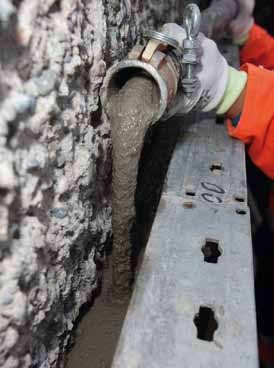
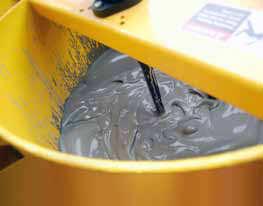


[23] F. Popolansky, "Frequency Distribution of Lightning Currents," ELECTRA 22, pp. 139 - 147, 1972,
[24] CIGRÉ Working Group 33.01. Guide to procedures for estimating the lightning performance of transmission lines, CIGRE Technical Brochure no. 63, October 1991.

Keynote addresses

Technical papers
1. Lightning and Tall Structures—Some Problems and Solutions
2. Application of MS IEC 62305: 2008, BS EN 50164 and IEEE STD 80 Earthing and Lightning Protection Standard for the MRT Project: Case study on MRT Underground Stations.
1. Lightning Parameters for Engineering Applications
2. Air Terminal Placement: The key to an Effective Lightning Protection of Structures
3. Protection Against Lightning for TNB Premises
4. Lightning Protection for Solar PV Farm
5. Regulatory Framework, Development of Standards and Requirement for Protection Against Lightning
6. TC81: Development and Requirements of IEC Standards on Protection Against Lightning
7. Protection of Electrical and Electronic Equipment and Systems Against LEMP
8. Design & Maintenance of Lightning Protection Systems
Prof. Liew Ah Choy
Dato’ Jimmy Lim Lai Ho
Prof. Mohd Zainal Abidin Ab Kadir
Mr. Hartono Zainal Abidin
Ir. Noradlina Abdullah
Mr. Wee Chek Aik
Ir. Hj. Abdul Rahim B. Ibrahim
Mr. Masaaki Sato
Ir. Lim Kim Ten
Mr. Thomas Yeo

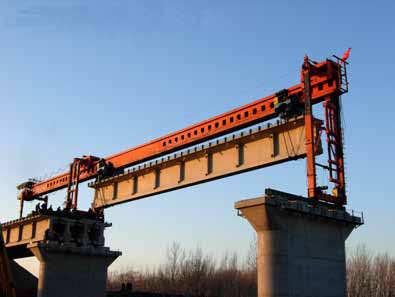

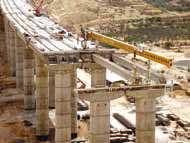

Title: Talk on Finite Element Modelling (FEM) of Offshore Structures
28 July 2015
Organisedby :Oil,GasandMiningEngineering TechnicalDivision
Time :5.30p.m.–7.30p.m.
CPD/PDP :2
Title: 2-Day Course Recognized Good Practices of Project Management
29 July 2015 - 30 July 2015
Organisedby :ProjectManagementTechnical Division
Time :9.00a.m.–5.00p.m.
CPD/PDP :14
Kindly note that the scheduled events below are subject to change. Please visit the IEM website at www.myiem.org.my for more information on the upcoming events.

NEXFORCE
NEXGRID GEOGRIDS
We also provide design, specification, bill of quantities, cost estimte and drawings free-of-charge.












PERMOHONAN BARU NamaKelayakan
KEJURUTERAAN AWAM
LEE LEONG WEIBE HONS (UTAR) (CIVIL, 2010)
MUHAMMAD ERWAN BIN ZULKIFFLY BE HONS (UiTM) (CIVIL, 2009) MSc (UiTM) (CONSTRUCTION, 2014)
TANG KOON GUANBE HONS (NANYANG TECHNOLOGICAL) (CIVIL, 2000)
MSc (NATIONAL UNIV.OF SINGAPORE)(PROJECT MANAGEMENT, 2004)
KEJURUTERAAN ELEKTRIKAL
ADI FIKRI BIN MOHD BAKIBE HONS (UNITEN) (ELECTRICAL & ELECTRONICS, 2009)
KEJURUTERAAN LEBUHRAYA
MUHAMAD SYAKIR BIN MAHI DIN BE HONS (UTM) (CIVIL, 2003) ME (NIGATA) (2006)
WAN NOOR ZURAINI BINTI WAN ISMAILBE HONS (UPM) (CIVIL, 2000)
WONG HOI WAYBE HONS (USM) (CIVIL, 2002)
KEJURUTERAAN MEKANIKAL
MOHD FAIZ FIKRI BIN YUSOFFBE HONS (UiTM) (MECHANICAL, 2008)
SHAFREEN BIN SAHWEEBE HONS (UTHM) (MECHANICAL, 2007)
WAZIYATI BINTI RAMLIBE HONS (UiTM) (MECHANICAL, 2002)
KEJURUTERAAN MEKATRONIK
GAN ENG FOOBE HONS (MULTIMEDIA) (ELECTRONICS-ROBOTICS & AUTOMATION, 2007)
KEJURUTERAAN PENGANGKUTAN
ER CHIA CHIABE HONS (UTM) (CIVIL, 2001)
MOHD RAWAWI BIN AWANG NGAHBE HONS (UTM) (CIVIL, 2003)
PERPINDAHAN AHLI No. Ahli NamaKelayakan
KEJURUTERAAN KIMIA
24207FITROTULHAYAT BINTI RODZI BE HONS (UKM) (CHEMICAL & PROCESS, 2000) MBA (IIUM) (CONSTRUCTION BUSINESS, 2007)
24306JUNE JANESBY ROY JIHOKBE HONS (CURTIN) (CHEMICAL, 2005)
16559TEOH BOON LAIBE HONS (UTM) (CHEMICAL, 1998)
KEJURUTERAAN AWAM
29798AMINUDDIN BIN SUHAIMI BE HONS (UTM) (CIVIL, 2007) ME (UTM) (CIVIL-STRUCTURAL, 2015)
27292 CHIN YIT TING BE HONS (USM) (CIVIL, 2007)
45322JERRY BETIE CHIN TIMOTHY ASSON BE HONS (UiTM) (CIVIL,2007)
18002KIEW KWONG PING BE HONS(MONASH) (CIVIL, 1996) ME (MONASH) (1998)
39045TONY KISMOOR ANAK SASAKBE HONS (UNIMAS) (CIVIL, 2006)
KEJURUTERAAN ELEKTRIKAL
No. Ahli NamaKelayakan
43958ANG LI CHUNGBE (SHEFFIELD) (ELECTRICAL, 2004)
37061MOHD SHARIL BIN SHAHARIBE HONS (UiTM)(ELECTRICAL, 2008)
42267MUHAMAD FAQIH BIN BADRISHAH BE HONS (UNITEN) (ELECTRICAL POWER, 2011)
58626SHARIMAN EFFENDI BIN SHARANI BSc (HANYANG) (ELECTRICAL & COMPUTER, 2008) CONVERSION PROGRAMME (UNITEN) (2011)
56498SOO TUNG SEUNG, JONATHANBE HONS (AUCKLAND) (ELECTRICAL & ELECTRONIC, 2009)
51267ZAFIRAH BINTI ZULKIFLIBE HONS (UNITEN) (ELECTRICAL & ELECTRONICS, 2009)
KEJURUTERAAN LEBUHRAYA
43536 ABDUL JAMEEL BIN A. ABDUL GAFOOR BE HONS (UNISEL) (CIVIL, 2009 ) MBA (EAST LONDON) (INTERNATIONAL BUSINESS, 2014)
KEJURUTERAAN MEKANIKAL
39996MOHD IZWAN BIN A RAHMAN @ AB RAHMAN BE HONS (UTM)(MECHANICAL-MATERIALS, 2004)
PERMOHONAN BARU MENJADI AHLI No. Ahli NamaKelayakan
KEJURUTERAAN ELEKTRONIK NOR AZHAR BIN MOHD ARIF BE HONS (LONDON) (COMMUNICATION & RADIO, 1998) ME (MULTIMEDIA) (2002) PhD (MULTIMEDIA) (2013)
NO. NO. AHLI NAMA
1.22447 AHMAD KHAIRUL HAKIMIN BIN IBRAHIM
2.00228 BALARAMAN K.G.
3.27648 CHAN KAM HOY
4.10908 CHANG CHOOI FOONG
5.13857 CHIN CHOON SENG
6.29053 CHIN KOK YOU
7.20955 CHOK CHING HUAT
8.10229 CHONG LAI KEONG
9.59113 CHONG SHIAU IUN, ABRAHAM 10.01666 CHOY FOOK KUN
11. 14128 CHU CHUN TAU, PETER
12.44154 CHUE SZE LYN
13.23901 DALIA UTAMA BINTI ZULNISYAM
14.12703 DR. MOHD. ZAMZAM BIN JAAFAR
15.42042 EDDY MOHD FAIRUZ BIN MOHD YUSSLEE
16.24799 FADZIL HARMAN SHAH BIN MUHAMAD JOHAR
17.38798 FAIZAL BIN MOHD ISMAIL
18.38798 FAIZAL BIN MOHD ISMAIL
19.36775 FAN SHAO SHYEN
20.02728 HII HIENG HUI
21.10013 JAMALUDIN BIN TAKEI
22.12533 KAMARUDIN BIN ABD. KARIM
23.21430 KHAIRILAZMAN BIN ISMAIL
24.15881 KUMARI NALINI A/P P. SUBRAMANIAM
25.58695 LAI SOO CHIN
26.07826 LAU LEE YENG
27.21581 LAW YAN CHEE
28.09010 LEONG SANG KHIM
29.16723 LIM SIN POH
30.14337 LIM YUEK LUH
31.10697 LOH FOOK GUAN
NAMA
LOH FOOK GUAN
LOK NGAI HEY 33.12975 MEOR RUSLAN BIN MOHD. IDRIS
34. 11511 MOHAMAD AZMI BIN ABDULLAH @ MAMAT
35.24170 MOHD SALLEH BIN NGAH MAT DRUS
36.16217 MUHAMMAD ASHRI BIN MUSTAPHA
37.24360 MUKHTAR BIN CHE ALI
38.09016 MUSA BIN OMAR
PANG CHIA PIAU
45.11588 POOK FONG FEE
46.07279 RAFIEE BIN MAMAT
47.07029 SIA CHAY THIAM
48.14580 SIA TUNG KIONG 49.72728 SITI MARHAINIS BINTI ABU MANSOR
50.08930 SOH THIAM BENG
51.03273 SYED ZAIN AL-KUDCY BIN DATO' SYED MAHMOOD
52.10328 TAN BEE YONG
53.08955 TAN GEEM ENG
54.14140 TAN HONG BOON
55.14199 TAN KIM THIN
56.20099 TEE BENG HOCK
57.14955 TENGKU HAZIAN BIN TENGKU AB. HAMID
58.11921 WONG BOON LIM
59.05023 WONG KA HOW
60.25758 WONG KING HONG
61.04610 WONG SOON HIIK
62.27465 DATUK PROF. ISMAIL BIN HASSAN
KEJURUTERAAN ELEKTRONIK
46985 MUHAMMAD AIMAN BIN AZIZUDDIN
B.E.(UMP)(ELECTRONIC, 2012)
21727TAN KANG SWEE, ERIC B.E.HONS.(MMU) (ELECTRONIC, 2006)
KEJURUTERAAN KIMIA
40961 MOHD AIZUDDIN BIN HASHIM B.E.HONS.(UMP) (CHEMICAL, 2010)
40575MUHAMAD ZAQWAN HADI BIN AHMED TAUFIQ
43246 TAN YIT ZEN
B.E.HONS.(UTM) (CHEMICAL, 2013)
B.E.HONS.(UMS) (CHEMICAL, 2013)
KEJURUTERAAN MEKANIKAL
57421ABDUL MUHAIMIN B. MOHD SHAFIE
B.E.HONS.(UTEM) (MECHANICAL, 2013)
23475AHMAD FIRDAUS BIN ZAWAWILANWAR B.E.HONS.(UITM) (MECHANICAL, 2006)
32310AHMAD ILMI FAIZ BIN AWANG NOOR B.E.HONS.(UITM) (MECHANICAL, 2010)
70873 ARAVIND A/L KOTTASAMY
B.E.HONS.(UMP) (MECHANICAL, 2014)
35768CHONG KIAN WEIB.E.HONS.(UTM) (MECHANICAL, 2010)
52741ENG ZE RUB.E.HONS.(CURTIN) (MECHANICAL, 2014)
26161 FAUZI BIN AHMAD B.E.HONS.(UTEM) (MECHANICALAUTOMOTIVE, 2007) M.SC.(UTEM) (MECHANICAL, 2010)
54403 HEPHZIBAH A/P DAVID
B.E.HONS.(UNITEN) (MECHANICAL, 2012)
16010JASNI BIN DEWAADV. DIP.(UITM) (MECHANICAL, 1995)
38808KOK JING SHUNB.E.HONS.(MALAYA) (MECHANICAL, 2011)
40390LEONG JIAN ZIB.E.HONS.(UTM) (MECHANICALINDUSTRIAL, 2013)
22794MAHAMAD HISYAM BIN MAHAMAD BASRI B.E.HONS.(UITM) (MECHANICAL, 2005) M.SC.(IIUM)(MECHANICAL, 2010)
30336 MOHAMAD AZAHAR BIN AHMAD B.E.HONS.(UITM) (MECHANICAL, 2010)
38272MOHAMAD FAIZ BIN ABDUL RAHIM B.E.HONS.(UITM) (MECHANICAL, 2012)
57454MOHAMMAD HAZRIN B. ISMAIL
B.E.HONS.(UTEM) (MECHANICAL, 2013)
25110MOHD RIZUWAN BIN MAMAT B.E.HONS.(UITM) (MECHANICAL, 2006)
35070MOHD SYARIFUDDIN BIN MOHD SENUSI B.E.HONS.(UITM) (MECHANICAL, 2012)
37768MUHAMMAD ALI AIMRAN BIN GHAZALI
39285MUHAMMAD ILHAM BIN MOHIDIN
B.E.HONS.(UNITEN) (MECHANICAL, 2010)
B.E.HONS.(UITM) (MECHANICAL, 2012)
46426MUHAMMAD WILDAN BIN JOHARI B.E.HONS.(UITM) (MECHANICAL, 2013)
30773 NOR HIDAYAT TAY BIN KHAIRULAZMI TAY
B.E.HONS.(UTM) (MECHANICAL, 2009)
44799QISTINA NAFISAH IMAN BINTI KAMARULZAMAN B.E.HONS.(UTP) (MECHANICAL, 2014)
39431SAIFUL BAHRI BIN MD NASIR B.E.HONS.(UITM) (MECHANICAL, 2013)
39482 SITI NOOR AZIZZATI BINTI MOHD NOOR B.E.HONS.(UITM) (MECHANICAL, 2012)
31505UMMI ZULAIKHA BINTI ABD RAHMAN @ ABD MALIK
B.E.HONS.(UITM) (MECHANICAL, 2010)
KEJURUTERAAN PEMBUATAN
34437CHIEW NING KAIB.E.HONS.(UTEM) (MANUFACTURING, 2009)
37458MUHAMMAD HAFIZUDIN BIN IDRIS B.E.HONS.(UKM) (MANUFACTURING, 2009)
PERMOHONAN MENJADI AHLI SISWAzAH No. Ahli NamaKelayakan
KEJURUTERAAN ALAM SEKITAR
73019CHUA WEN JYEB.E.HONS.(WESTERN AUSTRALIA) (ENVIRONMENTAL, 2013)
KEJURUTERAAN AUTOMOTIF
73459 NOR AZRI SHARIZAL BIN ABU BAKAR DIPL-ING.FH.( FACHHOCHSCHULE ESSLINGEN ) (AUTOMOTIVE, 2006)
KEJURUTERAAN AWAM
74203AHMAD FARUQI BIN KHELIKUZZAMAN
72712AHMAD ZUBAIDI BIN MUSTAFA
75251 AHMED ABDO ABDULLAH ALMANAKHI
72603AL SHARIF BIN SALAZAR
74331ALI HAMID HAMOOD DARIS
72601AMEEN ESAM MOHAMMED ALMUTAWAKEL
72727AMIR SAIFUL HARIS BIN ABDULLAH
73278ATHIRA BINTI ABDULLAH
B.E.HONS.(UITM)(CIVIL, 2014)
B.SC.(ALABAMA)(CIVIL, 1992)
B.E.HONS.(UITM)(CIVIL, 2013)
B.E.HONS.(UKM)(CIVIL, 2010)
B.E.HONS.(UTHM)(CIVIL, 2014)
B.E.HONS.(UITM)(CIVIL, 2012)
B.E.HONS.(UTM)(CIVIL, 2013)
B.E.HONS.(UTM) (CIVIL, 2011)
M.SC.(UTM)(CIVIL, 2012)
74198AW JIA HAOM.E.HONS.(NOTTINGHAM) (CIVIL, 2014)
74115AZLIANA BINTI AZLAM
74110 BUJANG ANAK KANANG
73400 CHAI TECK JUNG
74460CHANG WAI KHEI, JEFFREY
74112CHE MOHD ROSLI BIN CHE AWANG
B.E.HONS.(UTM)(CIVIL, 2011)
B.E.HONS.(UTM)(CIVIL, 1997)
B.SC.( UTM)(CIVIL, 2001)
B.E.HONS.(UTAR)(CIVIL, 2014)
B.E.HONS.(UTM)(CIVIL, 2011)
72620CHIA ERICB.E.HONS.(UMP)(CIVIL, 2013)
73390 CHIN CHIEW YEH, GEORGIA
B.E.HONS.(SWINBURNE) (CIVIL, 2011)
74461CHIN WEE ROONB.E.HONS.(ADELAIDE) (CIVIL, 2000)
72711 CHONG SHIN YEE
B.E.HONS.(UTM)(CIVIL, 2013)
73014CHOU KA CHUNB.E.HONS.(CURTIN)(CIVIL & CONSTRUCTION, 2014)
74558CHUA CHEE KEONGB.E.HONS.(UTAR)(CIVIL, 2014)
73387DAYANG ZANARIAH BINTI ABANG KASHIM
72734DICK HILMI BIN HASSAN
73102ELLY NORISSYA BINTI MOHD SAID
74560FARHANA BINTI SAMSUDIN
B.E.HONS.(LEEDS) (CIVIL, 2010)
M.SC.(LEEDS)(CIVIL, 2011)
B.E.HONS.(UTM)(CIVIL, 2013)
B.E.HONS.(UTM)(CIVIL, 2011)
B.E.(UMP)(CIVIL, 2009)
73381GOH CHEE HUIB.E.HONS.(UNITEN)(CIVIL, 2007)
74559HENG WAI KHENG, JAMIE
B.E.HONS.(UTAR)(CIVIL, 2014)
75144HOH WEN BINNM.E.HONS.(NOTTINGHAM) (CIVIL, 2012)
72654 IBRAHIM BIN ABD RAHMAN
74302 JONG WEI TAT
73394 JOYCE ANAK JANGGU
B.E.HONS.(MALAYA) (CIVIL, 2010)
B.E.HONS.(SWINBURNE) (CIVIL, 2011)
B.E.HONS.(SWINBURNE) (CIVIL, 2013)
72618KHOO LIM KIATB.E.HONS.(MALAYA) (CIVIL, 2008)
73098 KOO TING CHOONG
B.E.HONS.(UTP)(CIVIL, 2012)
72626LEE WEI MINGB.E.HONS.(SYDNEY) (CIVIL, 2014)
74098LEING CHUEN KEITM.E.HONS.(NOTTINGHAM )(CIVIL, 2014)
72645 LIM AUN LIM, ALEX
B.E.HONS.(MALAYA) (CIVIL, 2006)
75252LIM FON LIP, JUNEB.E.HONS.(SWINBURNE TECH)(CIVIL, 2011)
M.E.(SWINBURNE TECH) (CIVIL, 2013)
75263LIM MING SHIANB.E.HONS.(UTP) (CIVIL, 2010)
M.E.(UPM)(CIVIL, 2013)
72644LIM SIEW KIANGB.E.HONS.(KUITTHO) (CIVIL, 2002)
73403 LING TING ANG B.E.HONS.(UPM)(CIVIL, 1999)
73378LOK JUN JIAB.SC.(NATIONAL CHENG KUNG)(CIVIL, 2013)
72710LOO CHER FONGB.E.HONS.(UPM)(CIVIL, 2002)
72724 LOW YOONG LAM
72617 LU YEE YONG
74304MASTURA BINTI MOHD SALLEH
73022MOHAMAD SAIFUL AZLIE BIN AHMAD B.E.HONS.(UTM)(CIVIL, 2013)
73097 MOHAMED ASRAFF BIN MUIDIN IZAN B.E.HONS.(UMP)(CIVIL, 2009)
74551MOHAMMAD FAHMI BIN SHAMSUALHARIS
B.E.HONS.(UITM)(CIVIL, 2010)
75265MOHANASUNDARAM A/L SINNIAH B.E.HONS.(UTM)(CIVIL, 2007)
75266 MOHD AZUAN BIN TUKIAR B.E.HONS.(UITM)(CIVIL, 2009)
72605MOHD FAHMI BIN ROSLAN B.E.(VANDERBILT)(CIVIL, 2013)
74562MOHD FAISAL BIN NAWAWI
72906MOHD HAZIQ BIN MOHD ABD WAHAB
B.E.HONS.(UTM)(CIVIL, 2013)
B.E.HONS.(UITM)(CIVIL, 2011)
74105MOHD KHAIRI BIN SAH PRI B.E.HONS.(UITM )(CIVIL, 2007)
73086MOHD KHAMDY BIN MUKHTARUDDIN
B.E.HONS.(UTM)(CIVIL, 2009)
75262MOHD SHAFIQ BIN YAHYA B.E.HONS.(UPM)(CIVIL, 2012)
75258MOHD SHAHIR BIN MAHIYUDDIN B.E.HONS.(IUKL)(CIVIL, 2013)
73093MOHD SHOFIAN BIN MOHD SHARIR B.E.HONS.(UTM)(CIVIL, 2005)
73388MOHD. FIRDAUS BIN IBRAHIM B.E.HONS.(UNIMAS) (CIVIL, 2011)
73395 MUHAMMAD ALIF BIN JULAIHI B.E.HONS.(UITM )(CIVIL, 2010)
73090 MUHAMMAD ASYRAF BIN AHMAD B.E.HONS.(UITM)(CIVIL, 2014)
74116MUHAMMAD BIN BASER B.E.HONS.(UTM)(CIVIL, 2009)
72602MUHAMMAD MUSTAQIM BIN OMAR B.E.HONS.(UITM)(CIVIL, 2011)
72631MUHAMMAD NAZRIN BIN RUSLAN B.E.HONS.(UTM)(CIVIL, 2013)
73015MUHAMMAD NORAMIN BIN JANI B.E.HONS.(UTM)(CIVIL, 2012)
75145MUHAMMAD SYAMSUL HAFIDZ BIN MUHAMMAD SANUSI
B.E.HONS.(UITM)(CIVIL, 2014)
74196NADJA HANNA BINTI ADNAN B.E.HONS.(UNITEN)(CIVIL, 2013)
74113NAZRUL HISHAM BIN MOHD HOLDIN B.E.HONS.(UTM)(CIVIL, 2012)
74457NG SOOK PIANB.E.HONS.(SEGI)(CIVIL, 2011)
74199NOORLIYANA BINTI ZAKARIA B.E.HONS.(UITM)(CIVIL, 2012)
73087 NOR ASMA BINTI ALI AKBAR B.E.HONS.(UTM) (CIVIL, 2010) M.E.(UTM)(CIVILTRANSPORTATION & HIGHWAY, 2012)
73462NOR ZALINA BINTI ZAKARIA B.E.HONS.(UNIMAP) (CIVIL, 2013)
73370NORASEKEN BINTI HAMZAH B.E.HONS.(UTM)(CIVIL, 2007)
73406NORFADHILAH BINTI MOHD SAMRI B.E.HONS.(UTHM)(CIVIL, 2014)
74458NORNASIHAH BINTI IBNU ABBAS B.E.HONS.(UNIMAP) (CIVIL, 2013)
73023NUR NAEMAH BINTI ESA B.E.HONS.(UTM)(CIVIL, 2013)
72652NUR ZARINA BINTI ZAKARIA B.E.HONS.(UNITEN) (CIVIL, 2011) M.E.(UPM)(CIVIL, 2013)
73024NURSYAKIRAH BINTI ISMAIL B.E.HONS.(UTM)(CIVIL, 2013)
74102NURUL FARIHAH BINTI ABU KASIN B.E.HONS.(UTHM)(CIVIL, 2013)
74552NURUL NADILAH BINTI MUHAMMAT B.E.HONS.(UNITEN)(CIVIL, 2012)
73079NURULZIANA BINTI JAIDIN B.E.HONS.(UMP)(CIVIL, 2009)
73460ONG KHIN KIATB.E.HONS.(UNIMAS) (CIVIL, 2005)
74459 PANG YI SHIAN B.E.HONS.(UTAR)(CIVIL, 2013)
74308 PUI YUH TZER B.E.HONS.(RMIT)(CIVIL, 2002)
73025 QUIN ANAK EMPARAN B.E.HONS.(UTHM)(CIVIL, 2012)
72619RHENY ELAIDA BTE RAHIMAN B.E.HONS.(UITM)(CIVIL, 2012)
B.E.HONS.(MELBOURNE) (CIVIL, 2013)
B.E.HONS.(CURTIN)(CIVIL, 2012)
B.E.HONS.(UMP)(CIVIL, 2013)
72732MAY JAY JONGB.E.HONS.(KLIUC)(CIVIL, 2008)
74452 RINI ASNIDA BINTI ABDULLAH B.E.HONS.(UTM) (CIVIL, 2001) M.E.(UTM)(CIVIL, 2006 P.HD.(LEEDS)(CIVIL, 2012)
75261SHAHIRON BIN SHAHIDAN B.E.HONS.(UNISEL) (CIVIL, 2007) M.SC. (UPM)(CIVIL, 2010) P.HD.(USM)(CIVIL, 2014)
73280SHAMALA D/O KOPALA KRISHNAN
B.E.HONS.(UNITEN)(CIVIL, 2006)
74111 SIA CHEE CHUNGB.E.HONS.(BRADFORD) (CIVIL, 2010 ) M.SC. (LEEDS)(CIVIL, 2011)
74101SIEW KHIN WAHB.E.HONS.(UTHM)(CIVIL, 2012)
73359SITI NORSITA BINTI MOHD RAWI
72616
SIVARAJ A/L ANNAMALAI
B.E.HONS.(UMP) (CIVIL, 2010)
M.E.(UMP)(CIVIL, 2013)
B.E.HONS.(MALAYA) (CIVIL, 2008)
72623 SWEE YENN PERNG M.E.(BRADFORD)(CIVIL, 2010)
74307 TANEIZ CHELVAM A/L SELVARAJAH
B.E.HONS.(UTM)(CIVIL, 2012)
74119TEH SIEW FEIB.E.HONS.(UKM)(CIVIL, 2004)
73277TEH WEI HONGM.E.HONS.(NOTTINGHAM) (CIVIL, 2014)
74103 TEW SEOW TING B.E.HONS.(UMP)(CIVIL, 2012)
73389TING SIAW LYNN, LAURA B.E.HONS.(SWINBURNE) (CIVIL, 2010)
73016 WALTER ANAK LAWRENCE
73368WAN NOR HAZIERAH BINTI SOED
B.E.HONS.(UNIMAS) (CIVIL, 2009)
B.E.HONS.(UITM)(CIVIL, 2012)
74206 WONG SOON YEE M.E.HONS.(NOTTINGHAM) (CIVIL, 2014)
72630WOON WAI JACKB.E.HONS.(UTM)(CIVIL, 2013)
73398YAP CHUN CHONG, ALVIN
B.E.HONS.(SWINBURNE) (CIVIL, 2011)
72651YONG JE WEIB.E.(MONASH)(CIVIL, 2013)
74567ZAKARIA BIN BESARB.E.HONS.(UPM)(CIVIL, 1995)
73369ZANARIYAH BINTI ABU BAKAR
73324MUHAMMAD HAMBALI BIN TOBIAANY
72624 TEE JVN YI
74557ROSMINA BINTI JAAFAR
B.E.HONS.(UTM)(CIVIL, 2012)
B.E.HONS.(MCMASTER ) (MATERIALS, 2013)
B.E.HONS.(NOTTINGHAM) (MATERIALS, 2012) M.SC.(NOTTINGHAM) (MATERIALS, 2013)
B.SC.(CASE WESTERN RESERVE)(BIOMEDICAL, 1991) M.SC. (HERTFORDSHIRE) (BIO-MEDICAL, 2000) P.HD.(UKM)((BIOMEDICAL, 2009)
73363ABDUL HADRI BIN AB HALIM B.E.(UMP)(ELECTRICAL, 2010)
74118 ALEX A/L ELIZABETH ENCHING B.E.HONS.(UTM) (ELECTRICAL, 2004)
72735CHIEW CHIN HERNB.E.HONS.(UNIMAP) (ELECTRICAL, 2013)
74301CHIN LI HANB.E.HONS.(UTP) (ELECTRICAL, 2004)
73384CHONG KIAT SHIUB.E.HONS.(UTAR) (ELECTRICAL, 2008) M.E.(UTM)(ELECTRICAL, 2011)
73319CHOO HUEY MEIB.E.HONS.(UNITEN) (ELECTRICAL, 2012)
72725CHUA HOCK GUANB.E.HONS.(UTHM) (ELECTRICAL, 2010) M.E.(UTHM)(ELECTRICAL, 2013)
73026 D.KOHULEBALAN A/L V. DANDAPANI
B.E.(NORTHUMBRIA) (ELECTRICAL & ELECTRONIC, 1998)
74556KARTHIKUMARAN A/L NADARAJAN
73322KHAIRUN NISA BINTI KHAMIL
72730 KIMBERLY ANDING
73321 LAKSMAN A/L ASIATHAMBY
72649LAW HUAN PING, PETER
74311 LIEW TZE SIA
B.E.HONS.(AIMST) (ELECTRICAL, 2010)
B.E.HONS.(UNITEN) (ELECTRICAL, 2009)
B.E.HONS.(UTEM) (ELECTRICAL-INDUSTRIAL POWER, 2012)
B.E.HONS.(UNITEN) (ELECTRICAL, 2013)
B.E.HONS.(UNITEN) (ELECTRICAL, 2011)
B.E.HONS.(MALAYA) (ELECTRICAL, 2007)
75259LIM BOON KIATB.E.HONS.(UNITEN) (ELECTRICAL, 2007) MEM.(UPM)(ELECTRICAL, 2014)
73018MARYAM JAMELA BINTI ISMAIL
72721MOHAMAD SABHI BIN HISSAM
72642MOHAMAD ZAID BIN MOHAMAD ALI
73721MOHAMMAD HIZIR BIN ILIAS
73408 MOHD AZRI BIN MOHD SENARI
74305MOHD EZRAN BIN DARAMI
73405MOHD FIRDAUS BIN MOHD ZAKI
73320MOHD HALMI BIN ABAS
74104MOHD IKHWAN KHAIRI BIN MOHAMED RAWI
72709MOHD SAFRI BIN MOKHTAR
73380MOHD ZAFROL HAFEEZ BIN SHEE KANDAR
74550MUHAMAD FARHAN BIN ABD RAHIM
74549MUHAMMAD IKMAL AFIF BIN NORDIN
72646MUHAMMAD RANDIE BIN ABDULLAH
75255MUHAMMAD SYAHRANI BIN JOHAL
73362 NARESS A/L VIJAYAKUMARAN
73286 NG TZE HERNG
73367NGO KU HEAN, MICHEAL
75271NIK MOHAMAD HASLARIZAL BIN NIK MOHAMAD HASENU
74120NIK MOHD HANIF BIN MOHAMED
73017NOOR FAZLIANA BINTI FADZAIL
72706NOR IZA BINTI MOHD RAWI
73361NURAIDA BINTI MD HASSAN
B.E.HONS.(UTP) (ELECTRICAL & ELECTRONICS, 2009)
M.SC.(UTP)(ELECTRICAL & ELECTRONICS, 2013)
B.E.HONS.(UTM) (ELECTRICAL, 2012)
B.SC.(RENSSELAER) (ELECTRICAL, 2005)
M.E.(MALAYA) (ELECTRICAL, 2013)
B.E.HONS.(UITM) (ELECTRICAL, 2005)
B.E.HONS.(UPNM) (ELECTRICAL, 2011)
B.E.HONS.(MMU) (ELECTRICAL, 2005)
B.E.HONS.(MALAYA) (ELECTRICAL, 2009)
B.E.HONS.(UITM) (ELECTRICAL, 2008)
B.SC.(OHIO STATE) (ELECTRICAL, 2006)
B.E.HONS.(UITM) (ELECTRICAL, 2011)
B.E.HONS.(UTM) (ELECTRICAL, 2002)
B.E.HONS.(UITM) (ELECTRICAL, 2013)
M.E.HONS. (SHEFFIELD(ELECTRICAL, 2012)
B.E.HONS.(USM) (ELECTRICAL, 1998)
B.E.HONS.(UTEM) (ELECTRICAL, 2008)
B.E.HONS.(UNISEL) (ELECTRICAL, 2012)
B.E.HONS.(RMIT) (ELECTRICAL, 2013)
B.E.HONS.(UNITEN) (ELECTRICAL, 2013)
B.E.HONS.(UTM) (ELECTRICAL, 2008)
B.E.HONS.(UTP) (ELECTRICAL, 2012)
B.E.HONS.(UNIMAP) (ELECTRICAL SYSTEMS, 2012)
B.E.HONS.(UNITEN) (ELECTRICAL, 2007)
M.E.(UNITEN) (ELECTRICAL, 2013)
B.E.HONS.(UMS) (ELECTRICAL, 2001)
74332 TAN CHEK YAU
B.E.HONS.(UTAR) (ELECTRICAL, 2010)
73013TAN HAN DIMB.E.HONS.(UTM) (ELECTRICAL, 2002)
72640 TAN PING YANG
72639 TAN YU QUAN
B.E.HONS.(UMS) (ELECTRICAL, 2010)
B.E.HONS.(RMIT) (ELECTRICAL, 2011)
75269TEE SIAU CHIENB.E.HONS.(MALAYA) (ELECTRICAL, 2013)
74310THEN KAI HAOB.E.HONS.(UTHM) (ELECTRICAL, 2006)
72718TING KEE SIONGB.E.HONS.(USM) (ELECTRICAL, 2012)
73021WONG VUI LUNB.E.HONS.(UCSI) (ELECTRICAL & ELECTRONIC, 2013)
72729ZAHID BIN JAMUDINB.E.HONS.(UMP) (ELECTRICAL-POWER SYSTEMS, 2012)
73383DR. MAS FAWZI BIN MOHD ALI B.E.HONS.(UMIST) (ELECTROMECHANICAL SYSTEMS, 1997) M.E.(UTM) (MECHANICAL, 2007) P.HD.(TOKUSHIMA) ( EARTH & LIFE ENVIRONMENTAL, 2012)
74336AHMAD FAIQ BIN MD ZIN B.E.HONS.(UTEM) (ELECTRONIC, 2014)
75272AHMAD FAIZUDDIN BIN A BAKAR M.E.(IMPERIAL COLLEGE LONDON)(ELECTRONIC, 2012)
72907AL-KHALID BIN HAJI OTHMAN B.E.HONS.(NOTTINGHAM TRENT)(ELECTRICAL & ELECTRONIC, 1995) M.SC.(NOTTINGHAM) (INFORMATION TECHNOLOGY, 1996) P.HD.(NEWCASTLE UPON TYNE)(2007)
72615 AZIZUL BIN AWANG ANAK B.E.HONS.(UTM) (ELECTRONIC, 2006)
73281DR. NABILAH BINTI IBRAHIM B.E.(SHIBAURA) (ELECTRONIC, 2007) P.HD.(TOHOKU) (ELECTRONIC, 2013)
74309DR. ZUBAIDA BINTI YUSOFF B.SC.(OHIO STATE) (ELECTRICAL & COMPUTER, 2000) M.SC.(OHIO STATE) (ELECTRONIC, 2002) P.HD.(CARDIFF) (ELECTRONIC, 2012)
73089GARY GENT G.R. MOJINGOL B.E.HONS.(CURTIN) (ELECTRONIC & COMMUNICATION, 2010)
73397 GOH YUET PING B.E.HONS.(UNITEN) (ELECTRONIC, 2013)
72625 ISMAIL BIN AWANG B.E.HONS.(UTM) (ELECTRONIC, 2010)
73092 IT SEYAAM A/P SOMPHORN B.E.HONS.(UTM) (ELECTRICALELECTRONICS, 2010)
73365KHAIRUDDIN BIN ABDULLAH B.E.HONS.(UITM) (ELECTRONIC, 2008)
74564KHAIRUL FAIZAL BIN RAMLI B.E.HONS.(UITM) (ELECTRONIC, 2009)
75256 KISMET ANAK HONG PING B.E.HONS.(UNIMAS) (ELECTRONIC, 1999) M.SC.(LOUGHBOROUGH) (ELECTRONIC, 2000) P.HD.(NAGASAKI) (ELECTRONIC, 2009)
73392 KUAN YEE CHIANG B.E.HONS.(UNIMAS) (ELECTRONIC, 2009)
73461DR. ZAKARIA BIN HUSSAIN
74330
B.E.HONS. (HUDDERSFILED) (ELECTRONIC & ELECTRICAL, 1997) P.HD. (SHEFFIELD)(AUTOMATIC CONTROL & SYSTEMS, 2010)
EBRAHIMABDULAZIZ ALI AL-SHALIF
B.E.HONS.(UTHM) (ELECTRICAL, 2014)
72713EVENDY CHONGB.E.HONS.(UMS) (ELECTRICAL, 2008)
75260FARHEEN BINTI SUHAIMI
B.E.HONS.(UNITEN) (ELECTRICAL, 2013)
75268FATEN BINTI HAJI MOHD SAID B.E.HONS.(UTP) (ELECTRICAL, 2006)
72634FIRDAUS BIN KHALIDM.E.HONS.(MANCHESTER )(ELECTRICAL, 2013)
73773GOH JING WEI, JEREMY B.E.HONS.(UNITEN) (ELECTRICAL, 2013)
72633HISHAMUDDIN BIN BUYONG B.E.HONS.(UITM) (ELECTRICAL, 2013)
72627ISHAR BIN ITAMB.E.HONS.(UITM) (ELECTRICAL, 2004)
73284NUZILAN BIN MUHAMAD
M.SC.(USM)(ELECTRICAL, 2005)
B.E.HONS.(UNITEN) (ELECTRICAL, 2013)
73382ONG BOON LEONGB.E.HONS. (NORTHUMBRIA) (ELECTRICAL, 1997)
73285RAJA KHAIRITA AYUNI BINTI RAJA SHAHRIAL
B.E.HONS.(UNITEN) (ELECTRICAL, 2009)
74097ROHAIDI BIN JAMEINB.E.HONS.(UITM) (ELECTRICAL, 2009)
73364 SAKTHIVELA/L THANGAVELU
73318SITI RAIHAN BINTI AHMAD MAHIR
73772 SUNTHARARAJU A/L SELVATHORAY
B.E.HONS.(UNITEN) (ELECTRICAL, 2013)
B.E.HONS.(UNITEN) (ELECTRICAL, 2008)
B.E.HONS.(UNITEN) (ELECTRICAL, 2013)
73020TAN BOON KAIB.E.HONS.(UCSI) (ELECTRICAL & ELECTRONIC, 2012) M.E.(UNITEN) (ELECTRICAL, 2014)
73082MOHAMAD HAFIZE BIN RAMLI B.E.HONS.(UTEM) (ELECTRONIC-WIRELESS COMMUNICATION, 2013)
73371MOHAMED SAIFUL BIN ZAINALABIDIN B.E.HONS.(UTM) (ELECTRONIC, 2009)
73282 MOHD AZIM BIN MAHMUD B.E.HONS.(UTM) (ELECTRONIC, 2009)
72836MOHD KAMARUL IHSAN BIN ZAINAL ABIDIN B.E.HONS.(UTEM) (ELECTRONIC, 2008)
72622MOHD. FADZLI BIN HAMIDON B.E.HONS.(UTM) (ELECTRONIC, 2011)
74335MUHAMAD NOOR RUSHDAN BIN ABDULLAH B.E.HONS.(UTEM) (ELECTRONIC, 2014)
74117NOORAZRENIME BINTI MAHMOD B.E.HONS.(UTM) (ELECTRONIC, 2000)
74456NORDIN BIN AMINUDDIN B.E.HONS.(UTHM) (ELECTRONIC, 2005)

